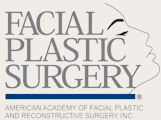Turbinate Reduction
Treatment for Enlarged Turbinates / Turbinoplasty
Turbinate Reduction Overview
| GOALS | Improve nasal airway obstruction due to internal structural deformity | |
| PROCEDURE | Turbinate Reduction | |
| ANESTHESIA | Local anesthesia with or without sedation or general anesthesia | |
| LENGTH | About 30 minutes | |
| AFTER PROCEDURE |
|
|
| RECOVERY | Resume normal activities after a couple of days, return to work in a few days, resume full activity and exercise within a week. |
| >VIEW REVIEWS Click to read our Reviews |
Description
Turbinate Reduction is performed to improve nasal breathing obstruction. The procedure entails modification of the size or positioning of the inferior nasal turbinates. Turbinate Reduction does not affect the appearance of the nose in most cases, and does not result in any bruising or external signs of surgery.
The turbinates compose most of the mucosal tissue of the nose and are required for functional respiration. The turbinates are also responsible for filtration, heating, and humidification of air inhaled through the nose. Large, swollen turbinates may lead to blockage of nasal breathing. Allergies, exposure to environmental irritants, or a persistent inflammation within the sinuses can lead to turbinate swelling. Deformity of the nasal septum can also result in enlarged turbinates.[3] Treatment of the underlying allergy or irritant may reduce turbinate swelling. In cases that do not resolve, or for treatment of deviated septum, turbinate surgery may be required.
Why Should You Choose Dr. Pearson to Perform Your Nasal Procedure?
Dr. Pearson is trained in both facial plastic surgery, and ear, nose and throat surgery, which provides you as the patient with the highest level of training and expertise. Furthermore, Dr. Pearson is an expert in the field and has written numerous surgical book chapters and articles covering various aspects of nasal surgery.
Candidates
You may be a candidate for septoplasty if you experience nasal airway obstruction that is not adequately relieved with medical management such as topical nasal sprays or allergy treatments. On nasal exam, internal structural deformity may appear to contribute significantly to your symptoms.
Surgery
During turbinate reduction, the inferior nasal turbinates are approached with invisible incisions placed entirely on the inside of the nose. The inferior turbinates then undergo modification to minimize the cause of the airway obstruction. The procedure takes approximately 30-60 minutes to perform. Hidden internal nasal splints and absorbable sutures are used to facilitate healing.
Complementary Procedures
Turbinate Reduction may be combined with septoplasty or Rhinoplasty for breathing obstruction or for improving nasal appearance.
Recovery
Following Turbinate Reduction, you can expect a couple of days of minimal swelling and soreness which is well controlled with Tylenol in most cases. Internal nasal splints are typically removed after 7 days. By then, much of the nasal swelling is resolved and nasal breathing is improving. You can resume most normal activities after a couple of days, except for intense exercise, which may be resumed at about 3 weeks. Most people return to work in 1 week.
Nasal Surgery Publications by Dr. Pearson |
|---|
Dr. Pearson is a nasal specialist and a published author who has written numerous articles and plastic surgery textbook chapters on this topic. Learn more here.
- Quatela VC, Pearson JM. Management of the Aging Nose. Rhinoplasty The Experts Reference. Ed. Sclafani, AP. Thieme. 2015
- Quatela VC, Pearson JM. The Underprojected Nose / Ptotic Tip. Master Techniques in Rhinoplasty and Nasal Reconstruction. Ed. Azizzadeh B, et al. Philadelphia, Elsevier. 2011
- Sclafani AP, Pearson JM. Nasal Grafts & Implants. Advanced Therapy in Facial and Plastic and Reconstructive Surgery. Ed. Thomas JR. PMPH-USA, Ltd. 2010
- Quatela VC, Pearson JM. Management of the Aging Nose. Facial Plast Surg. 2009 Oct;25(4):215-221.
- Romo T 3rd, Pearson JM. Nasal implants. Facial Plast Surg Clin North Am. 2008 Feb;16(1):123-32
- Romo III T, Patel A, Pearson JM. Local Mucosal Flaps for Closure of Septal Perforations. Grabb’s Encyclopedia of Flaps, Volume I: Head and Neck, 3rd Edition. Eds. Strauch B, et al. Philadelphia: Lippincott Williams & Wilkins, 2009. 221-224.
- Romo T 3rd, Pearson JM, Lin HS, Patel A, Presti P, Abraham MT, Yalamanchili H. Rhinoplasty, Postrhinoplasty Nasal Obstruction. e-medicine article. https://emedicine.medscape.com/article/841574-overview. October 12, 2007.
- Romo T 3rd, Yalamanchili H, Presti P, Pearson JM. Septal Perforation: Surgical Aspects. e-medicine article. https://emedicine.medscape.com/article/878817-overview. July 24, 2007.
| >VIEW PHOTOS Click to view additional Before & After Photos |


















